
Email Marketing for Publishers: How to Redesign Your Campaigns
As a publisher, you’re well-versed in different types of content. Blog posts, videos, ebooks and everything in between are your bread and butter. And you know how various readers engage with all forms of content.
Crafting quality content takes time. But what about content distribution? Since you’re using email marketing, you know how demanding a versatile email campaign could get. Especially when you’re managing content production while juggling multiple channels like social media, and dealing with last minute editorial changes.
While content production can take a lot of time and resources, your email campaigns don’t have to.
In this article, we’ll walk through the core elements that can transform your publishing email marketing strategy, from a time-consuming task to a more intimate communication channel with your audience.
Send newsletters that get clicked with ready-made templates
Think of all the different departments that send emails to your readers every day. Marketing focuses on promotions, editorial shares digests, and subscription teams send renewal reminders.
Without a unified approach, each team will build emails their own way, making the subscriber experience feel fragmented. Imagine getting a sleek, modern email one day, then a plain, mismatched one the next. Inconsistency likes this hurts engagement and trust. Instead, a cohesive design ensures every email feels part of the same brand.
To achieve this consistency, while also saving time, you can use ready-made templates. Moosend’s templates are plug-and-play and come with pre-stylized colors, fonts, and layouts that you can customize to align with your publishing brand’s visual identity. That way, you can ensure that all types of emails feel professional.
But let’s see that in action.
Your first step should be logging into your Moosend account—or creating one for free. It takes just a couple of clicks and there’s no credit card required. Looking into the template library, you’ll discover 100+ email designs. Like this one:

Imagine launching a highly anticipated new book. Instead of designing the announcement email manually from scratch, you can select this pre-designed template and add the following elements:
- A bold header with the book’s cover.
- A “Shop Now” or “See More” on the CTA button, depending on the action you would like your reader to take.
- Reviews of the book by renowned book critics.
- Suggestions for books by the same author or genre.
- A snippet of the author’s biography.
A template like this one ensures your campaign looks polished. With a little customization, you’ll stay on-brand and deliver a seamless experience.
Of course, there’s more to publishing emails than just book announcements. As a publisher, you’ll probably need to send an RSS campaign—and you’ll need an email template that can work for you. Like the following:

Imagine effortlessly delivering your latest articles to subscribers without the hassle of designing each email from scratch. With this ready-made RSS email template, publishing agencies can streamline their newsletter process and keep readers engaged. Simply set it up and add the following elements:
- Your latest articles. These will be pulled directly from your RSS feed, complete with images and headlines.
- Clear CTA buttons like “Read More” or “Explore Topics” to drive readers back to your website.
- An “Editor’s Pick” section or a “Featured Contributor” section that will build credibility and strengthen your community by turning a reader into a brand ambassador.
A template can increase reader engagement with visually engaging layouts, boost traffic and page views with prominent “Read More” buttons and save time on creation and ideation.
Plug-and-play email templates can go beyond just design. Mobile responsiveness is an issue that sometimes gets overlooked. A growing number of subscribers read their emails on their mobile devices. But if they’re on the go, they won’t likely zoom in to read the text or try to press a button that is just too small to tap easily. This will lead to a drop of your engagement rates—and perhaps an increase of your unsubscribe rates.
Using ready-made, responsive email templates will tackle all the technical details, allowing you to deal with more pressing tasks.
Forget writer’s block with an AI Writer
If there’s an industry that’s heavily content-focused, this would be the publishing industry. But when it comes to email marketing, writing engaging email subject lines and high-quality email copy can be a little complex.
Not everyone is a copywriter. Crafting a well-structured email with a clear subject line, a compelling opening, and a strong CTA that drives action can be a challenging task.
This is where an AI writer comes into play. Instead of spending meeting after meeting on ideation and hours on crafting content from scratch, publishers can generate relevant, engaging copy with simple prompts.
You can use an AI writer to:
- Automatically draft email content based on recent articles, book releases, or editorial updates.
- Create subject lines and CTAs that can score better open and click-through rates.
- Summarize long-form content like reviews into smaller, digestible bits.
- Perform copy checks and eliminate the possibility of grammatical errors and typos.
Using an AI writer like the one integrated into Moosend’s platform is a very simple process. You can start by creating your first campaign and setting up a prompt for an intriguing subject line:

Rather than struggling to come up with the right words, use Moosend’s AI writer to generate and refine content within minutes. This will reduce the time spent on email production. And since the AI writer is built into Moosend’s platform, you’ll never have to switch between tools to get the result you need.
The best part about Moosend’s AI Writer is that you can ask it to craft any type of content you need, from subject lines body copy and CTAs. If there’s anything you feel doesn’t do your brand justice, you can always refine your prompt, set different settings and regenerate:
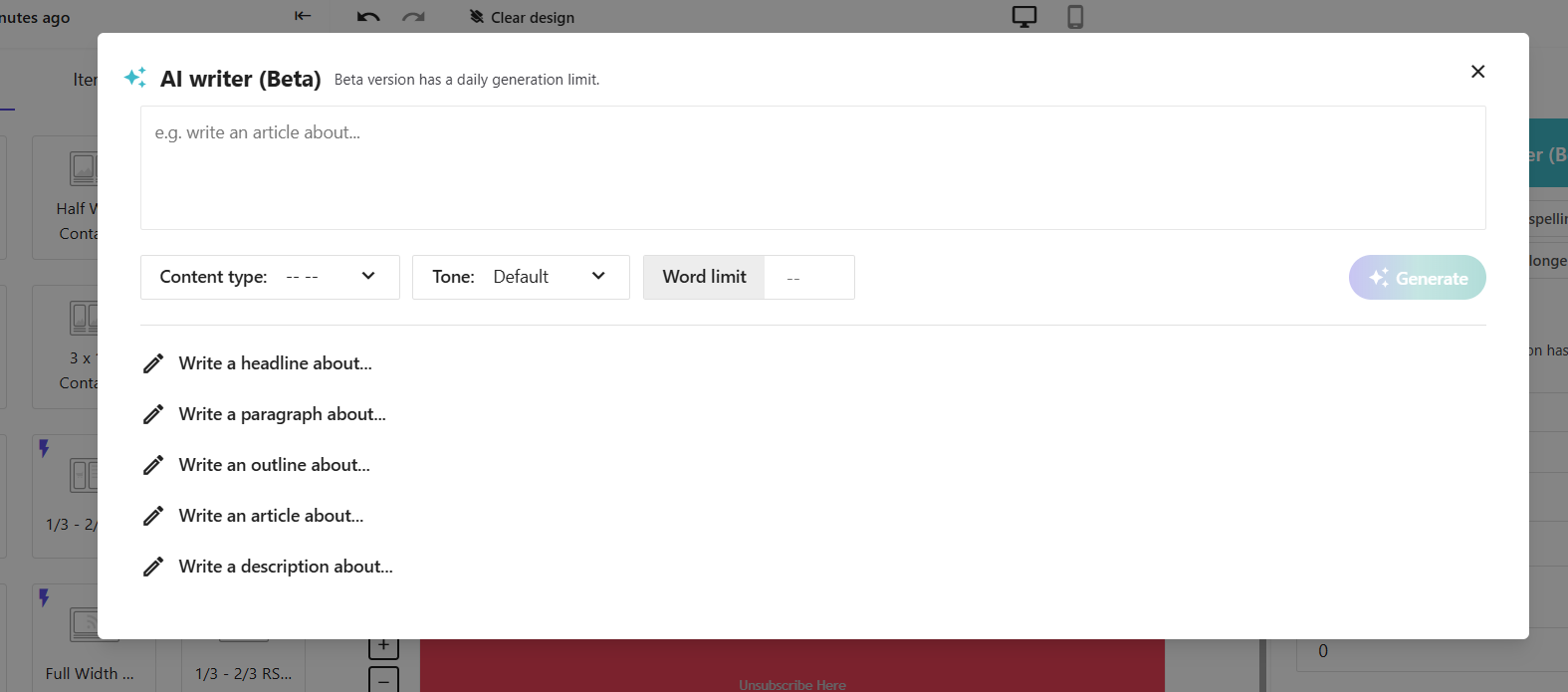
Apart from content generation, Moosend’s AI Writer can be your extra pair of eyes in terms of not only copy checks but also brainstorming. Auto-generated content can be a great starting point towards an email that recipients want to read.
Imagine sending a weekly roundup of your top articles. You could have a team member write subject lines, email content, and CTAs. Or you could save time with an AI writer.
You could ask the AI writer to summarize each article and craft concise descriptions for your digest, suggest subject lines that can maximize your open rates, or format the body copy’s structure for better readability.
In that case, the AI writer will do the heavy lifting, allowing the marketing team to save hours on research and ideation, delivering a polished email to subscribers.
Deliver personalized content with Conditional Visibility
Readers subscribe expecting valuable, relevant updates. Yet they often receive emails with content that doesn’t match their interests. A literary fiction reader may get updates about business books. A print magazine subscriber might receive digital subscription offers they don’t need. Or a niche poetry enthusiast could be bombarded with general publishing news.
When emails fail to resonate, subscribers stop engaging.
The root of the issue is that publishers, due to lack of time, rely on a one-size-fits-all approach. Since publishing brands produce a diverse range of content, it’s difficult to craft a single email that’s relevant to every reader.
On the other hand, creating multiple email versions for different audiences is equally impractical and time-consuming.
So, how can you tackle this problem without crafting multiple emails for the same campaign, just to cater to an audience as diverse as that of your publishing brand?
The answer lies within conditional visibility blocks. This is a Moosend feature that allows you to create emails with dynamic content that changes based on each recipient’s preferences and reading history.
Instead of crafting multiple versions of the same email to cater to different segments or user groups, publishers can build one “master email” and use visibility blocks to give each recipient the content they subscribed for.
This feature ensures each reader gets a tailored experience without increasing the workload for marketers in publishing. The best thing is that it doesn’t require any manual work. Just locate the block you want your conditions to apply to, and then select your visibility conditions:
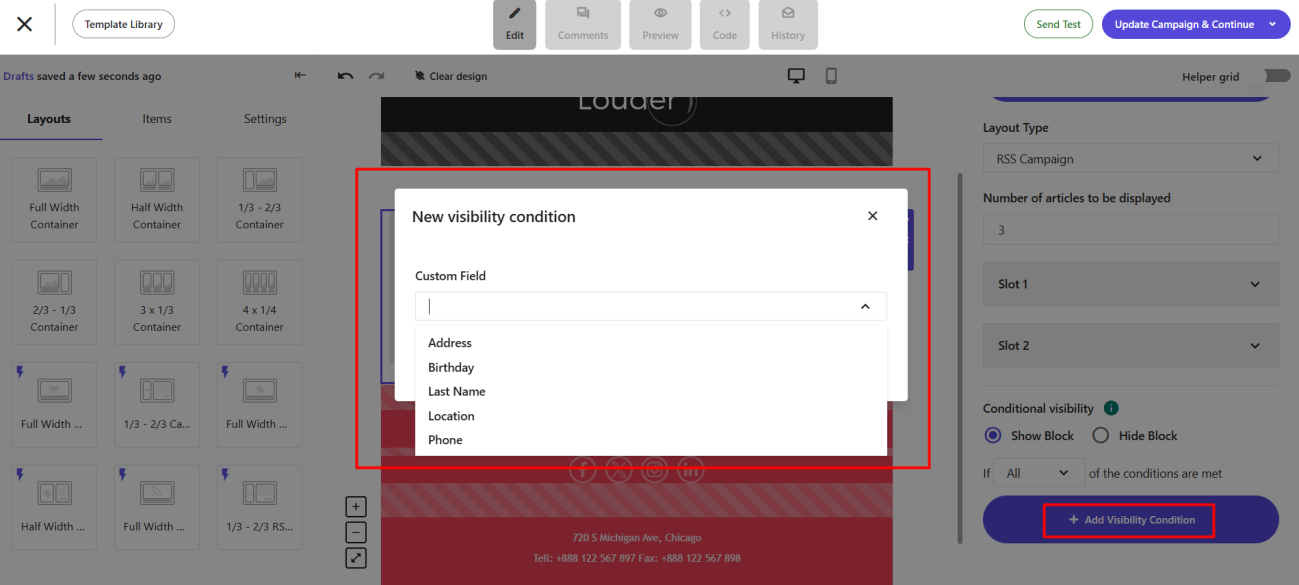
The conditions above are indicative. You can set and select any visibility condition you want, as the data are drawn from your custom fields.
So, by the example above, imagine you’re sending a monthly digest to your readers. Customize your content dynamically with conditional visibility blocks by:
- Showing featured poems and interviews with poets to poetry enthusiasts.
- Giving short story previews and novelist Q&As to fiction lovers.
- Showcasing business news and articles to industry professionals.
Using custom fields will transform your email based on the recipient. Since content will be always relevant, readers are more likely to engage, boosting the rates that matter, like your open rates or your CTR, and your overall email campaign performance.
But let’s get a little more in-depth on why you should use conditional visibility blocks as a publisher:
Show different content based on subscription types
Publishers often have multiple subscription tiers—print, digital, premium, or free access. Instead of sending a generic newsletter with irrelevant offers, conditional visibility blocks ensure each subscriber sees only what applies to them. This eliminates confusion and ensures that no one receives an email promoting a service they already have or don’t need.
Adapt your emails for regional or licensing restrictions
Publishing houses can operate nationwide, or globally across different regions. The latter means that each department needs to abide by different licensing agreements, language preferences, or content availability. Instead of creating multiple versions of an email, publishers can display localized pricing or currency information for different markets, highlight region-specific events or offer translations or language-specific recommendations.
Customize promotions based on reader behavior
Publishers often run multiple promotions. Instead of sending a mass email where most offers don’t apply, conditional visibility blocks allow for real-time customization. If a reader clicked on a book preview but didn’t buy, they see a limited-time discount for that title. If a subscriber engaged with science fiction content, they receive sci-fi genre promotions instead of unrelated categories. Or if someone has already redeemed a discount, they won’t see the same offer again, avoiding redundancy.
Reduce clutter in multi-topic newsletters
Publishing agencies often have diverse content offerings like book releases, author Q&As, industry news, and editorial features. A traditional email layout forces all readers to scroll past content they might not care about. With conditional visibility blocks, an academic reader sees research-based articles and whitepapers, while a general audience subscriber gets popular culture book reviews.
Without any extra effort, publishers can ensure their emails always show the right thing to the right people. This way, their campaigns are always relevant, valuable, and engaging.
Conditional visibility blocks also boost customer experience, as readers won’t need to skim through content that doesn’t interest them.
Know what campaigns to send to engage and convert
A well-structured revamp of your publishing agency email campaigns isn’t just about sending content that resonates. It’s about sending the right campaigns at the right time as well, to maximize engagement and revenue.
So, what high-impact campaigns should your publishing brand prioritize and what are the tactics that will improve efficiency and campaign performance?
RSS campaigns
Editorial emails are the most common ones publishing houses send. For example, a business publication can set up an RSS-driven campaign where the latest articles auto-populate an email, requiring zero manual input. At the same time, an RSS editorial campaign ensures timely content delivery.
Craft your RSS campaign with a template with distinct content blocks. For example, separate your content with bold headings like “feature story,” “trending articles,” “editor’s picks,” etc. This allows readers to skim the email without any effort.
An appropriate RSS template will pull in content from your website’s RSS feed to populate newsletters with the latest articles, eliminating manual effort.
Book launches and pre-orders
For publishers, handling book releases and pre-orders is a common occurrence. With email marketing, publishers can drive awareness and direct sales. Let’s see an example. A fiction publisher can create a series of emails for their pre-launch campaign, that includes teasers, interviews with the author, and early snippets.
This action will build anticipation and maximize pre-orders without a lot of manual effort.
Use countdown timers to gradually escalate urgency. Start with an announcement, continue with emails with exclusive content, and end with a “Last chance to pre-order” CTA.
After the launch, include a “Thank you” campaign for the pre-orders you’ll get as a part of your book launch campaign. Lead users to leave a review of the book or their order experience through your CTA.
Event invitations and webinars
As a publisher, it’s very common to host events and webinars, making event-based emails a very fitting choice. Such emails must be structured for maximum attendance and post-event engagement.
Let’s assume you’re a publishing house that hosts a monthly live Q&A with authors. Set up an automated repeatable campaign that updates dynamically based on the changes you make on a designated website source—in our case, the events page.
This campaign will be triggered automatically when changes occur, allowing you to perform multiple marketing actions with just a change of name.
Make sure to break down your campaign into multiple sequences. Set up an email series with an initial invite, an event reminder, and a last call. Monetize your efforts and boost your bottom line by offering recorded sessions and exclusive transcripts of the event as premium, gated content.
Subscription renewals and upselling
Subscriber retention is critical for a steady stream of revenue, and your email campaigns are the first tool in your line of defense against customer churn.
Imagine you’re running a digital magazine. You want to set up an automated renewal journey. To do so, you include a teaser of an upcoming exclusive article in your email, nudging subscribers to renew before losing access.
You can create two main groups of users, based on the data you already have: The high-engagement users who can see benefit-driven reminders, and the low-engagement users who will be hooked with an incentive.
The first group of users will also be enticed through premium content teasers. So, highlight exclusive perks only available to paying subscribers, like behind-the-scenes articles or early access to new content.
The second group can be enticed with monetary benefit, as they’re not in the same stage of the funnel as your high-engagement users. So, highlight benefits such as the subscriber-only discounts to have them interact with your publishing brand and, eventually, get hooked on your content.
By combining your RSS feed, conditional visibility blocks, and repeatable email templates, publishers can send email campaigns with ease and get revenue-generating results, all the while reducing manual work.
Ready to create a publishing campaign that converts?
Redesigning your email campaigns as a publisher has nothing to do with just making them look better, and everything to do with optimization—while saving time, no less.
Publishers usually don’t have time for manual, high-effort email creation, nor can they afford to send a one-size-fits-all type of campaign that fails to connect with their diverse audience.
Responsive email templates with a professional look and feel, an AI writer that eliminates the burden of crafting engaging content from scratch, conditional visibility blocks that dynamically adjust to each subscriber’s interest, and structured campaigns powered by RSS feeds allow for publishers to scale their efforts without sacrificing quality.
Spend less time on execution while enjoying more impact from every email campaign you send. Embrace these redesign strategies and maximize reader engagement and revenue while saving time.
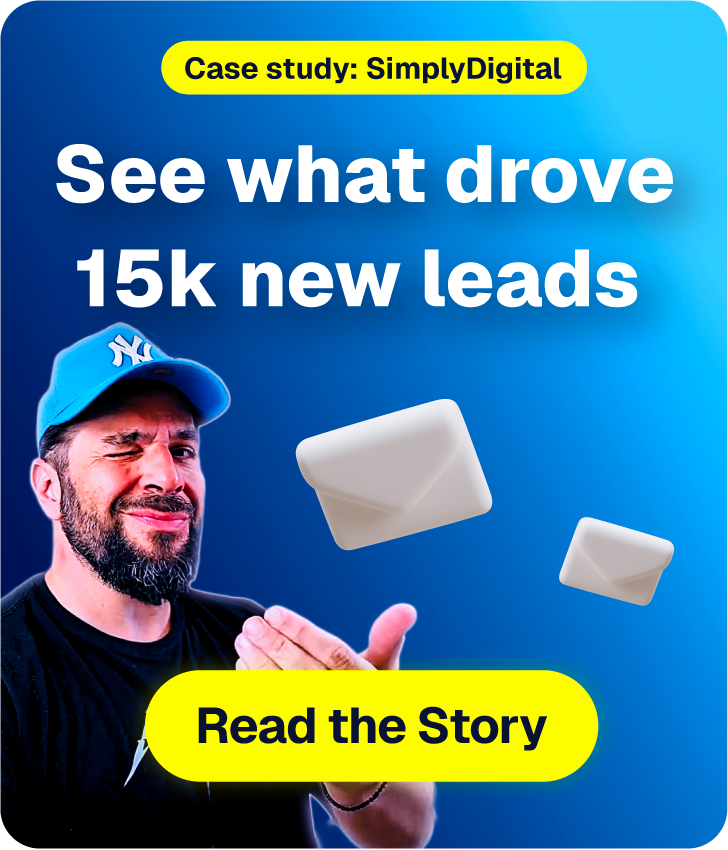
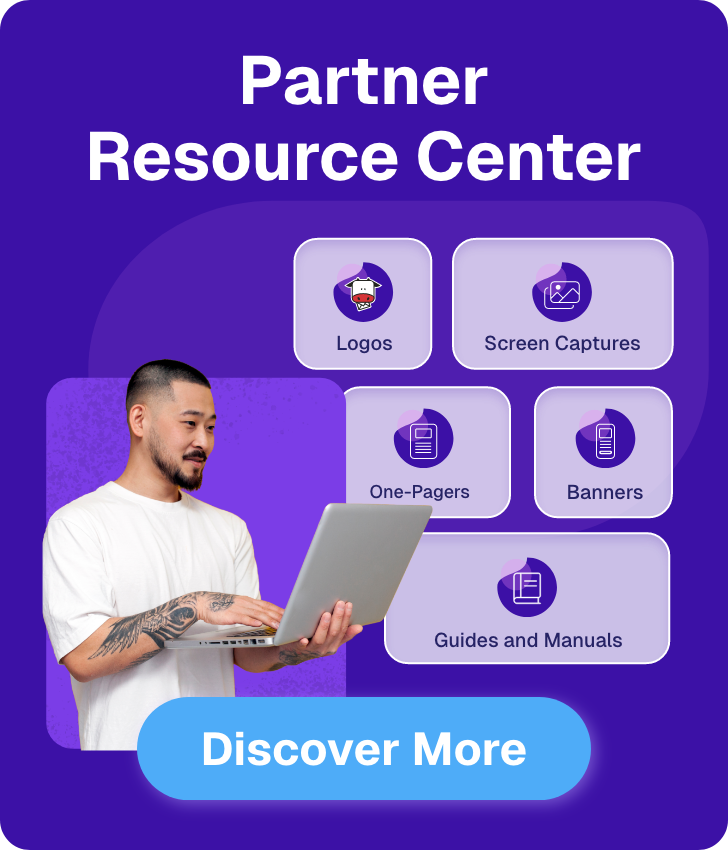

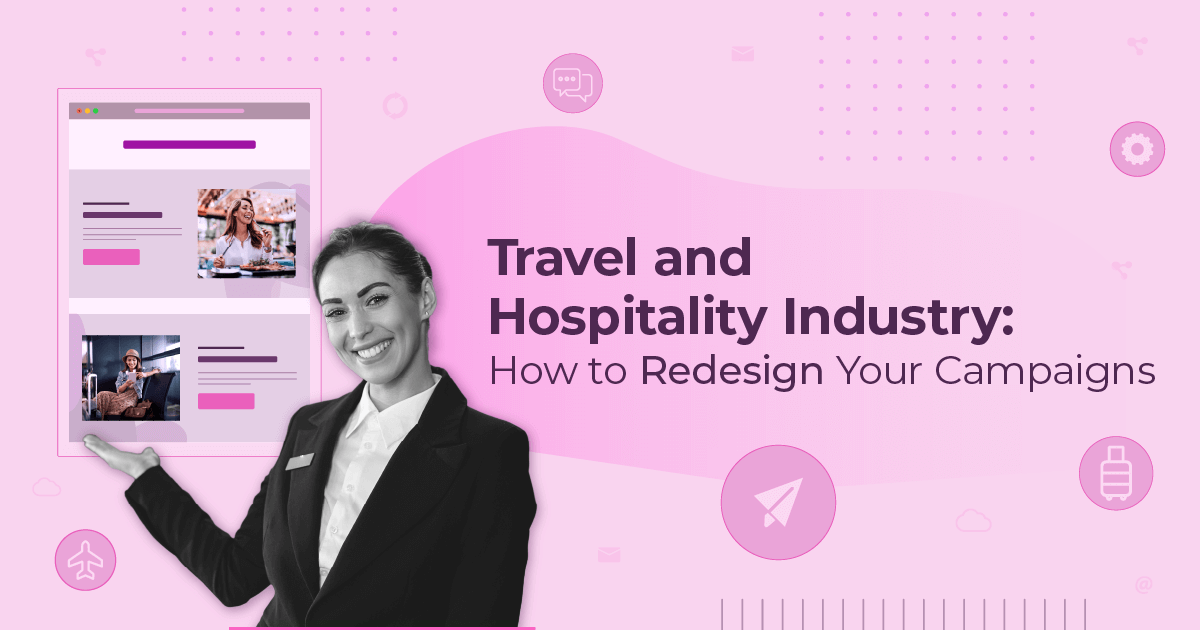
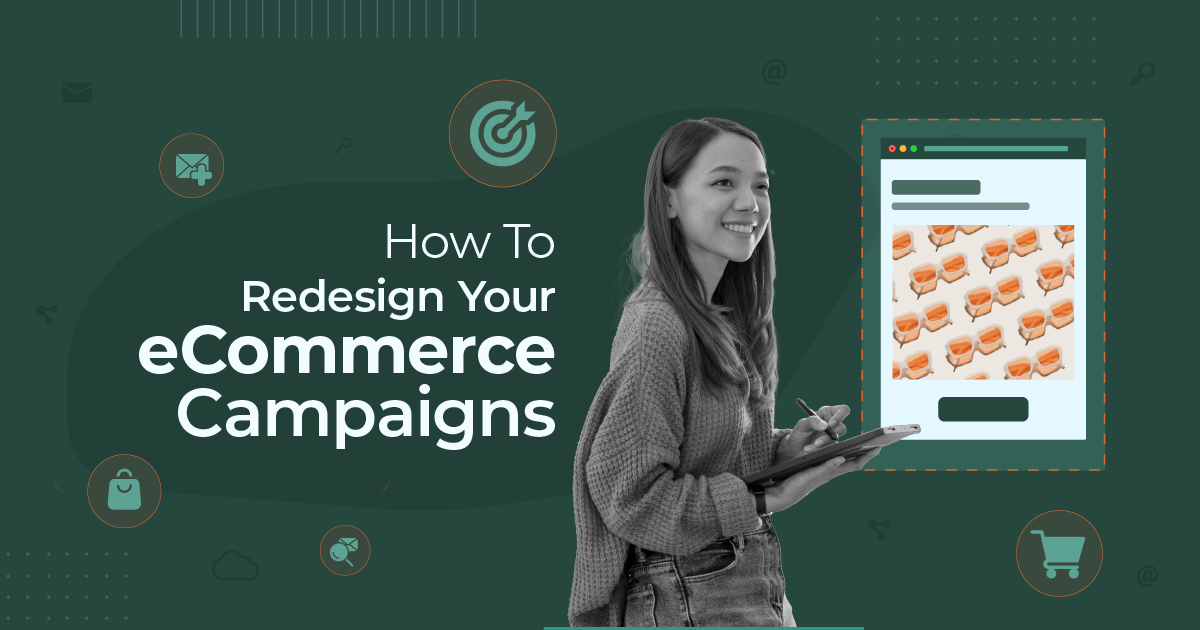

 Published by
Published by